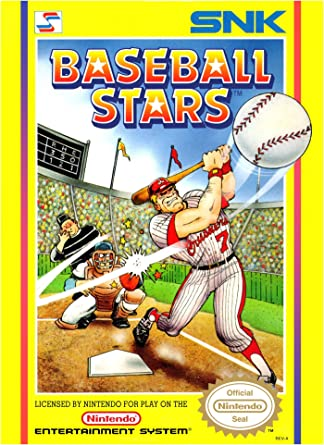
With more than forty years in the rearview mirror, it’s easy to see the video game crash of 1983 as a blip in the rise of the inevitable video game market. The reality at the time was that nobody really knew how long the drought would last. Gaming would continue in the home computer market but at a high price point. The three major choices were IBM, Apple, and Commodore. To get one would set you back $500 to $2000 dollars (about $1,500 to $5,500 in 2023). Comparatively, in 1981, the Atari 2600 cost about $130 (about $500 in 2023), and that price point is the sweet spot for a home console system. Consoles need to move tons of units and get into a lot of homes.
The Nintendo Entertainment System (NES) entered the market on the heels of the crash. It retailed around $179 (about $500 in 2023) and it snuck its way into the toy stores under the noses of executives who had just taken a bath on unsold video game systems. This was no small feat – it was a success and the system effectively re-started the revolution. Consoles returned to homes and would offer consumers an alternative to the slower, more text-friendly home computer games.
Baseball Games
The baseball game market was no different. At the time, home computers had modest graphic capabilities and often lacked robust color pallets, complex sprites, and fast refresh rates. Sometimes they lacked all of those things. The strengths of the home computer were storage space (floppy diskettes can hold a lot of data and were very inexpensive) and the ability to write data (i.e. save your game).
The pinnacles of baseball gaming on home computers in this era were APBA Major League (1985), MicroLeague Baseball (1984), Earl Weaver Baseball (1987), and Hardball! (1985) The first three in that list excelled in their statistical data allowing players to use real historical teams and also save the resulting statistics to varying degrees. Earl Weaver also let the user play in an arcade-like mode while Hardball! did not feature real players but was an arcade-style game.
The First Launching Pad for Baseball Series
The NES marked the beginning of baseball games as a console staple. The Atari 2600 published over 500 games in North America, five devoted to baseball. The NES by comparison had 20 baseball titles in its 700+ game library. The first notable title on the system was R.B.I. Baseball by Tengen (1986 JP, 1988 NA), which spawned the long-running series. One year later, the Bases Loaded series by Jaleco debuted in Japan and was released in North America in 1988. There was a third major series that started on the NES in 1989 (both in Japan and North America) and that series was Baseball Stars by SNK.
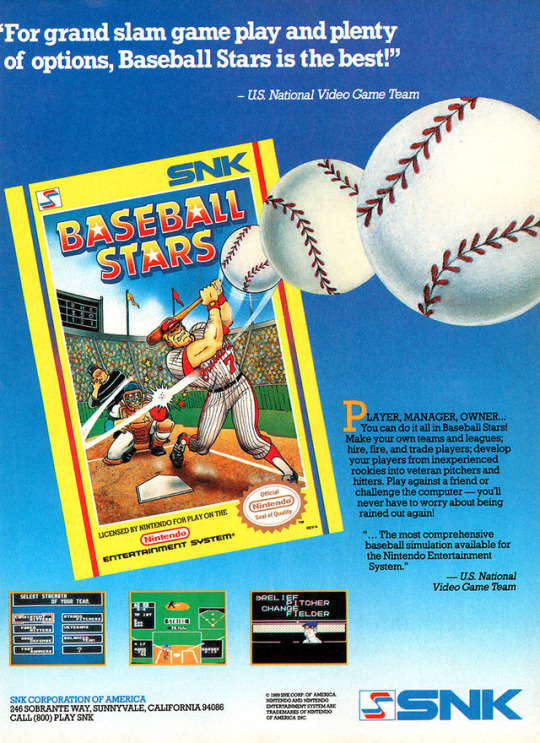
PLAYER, MANAGER, OWNER… You can do it all in Baseball Stars!
Make your own teams and leagues; hire, fire and trade players; develop your players from inexperienced rookies into veteran pitchers and hitters.
Play against a friend or challenge the computer – you’ll never have to worry about being rained out again!
Baseball Stars Ad (1989)
VideoGameAds on Tumblr
The New Japan Project
SNK (originally founded as Shin Nihon Kikaku in 1973) entered the arcade machine market in 1978 and by 1985, they were established as a regular game producer. In 1986, they had a worldwide breakout hit in Ikari Warriors, a Rambo-esque top-scrolling shooter. This coincided with their first sustained foray into the console market and the Japanese-made NES was a perfect fit for their arcade titles.
In 1987 and 1988, SNK began producing sports games, both for the arcade and home markets. They included: Touch Down Fever (1987), Touch Down Fever 2 (1988), Fighting Soccer (1988), Country Club (1988), and Lee Trevino’s Fighting Golf (1988). None of these titles would have a lasting effect on the industry. But their next one would.
Breaking New Ground
Baseball Stars was SNK’s first attempt at a baseball title in an era where virtually every other baseball game was also someone’s first attempt. As a result of this, players were able to see the experimentation and evolution of the genre. Some attempts just didn’t work well, but these often made it to the end product. But even during this time when experimentation was the norm, SNK took some major leaps in their first title.

Unlike home computers, consoles lacked the native ability to save data. As cartridges got larger and consoles became more powerful, sports titles grew with them. They included different players (real or fictional) with varying skills and sometimes included statistical data. However, they still couldn’t save data. Games of this era circumvented this with password systems, but this limited what the game could do. A short password could indicate that you defeated a certain level (or team). This allowed you to start at the next level (or a round of a tournament) after powering down the game. But it couldn’t encode that Roger Clemens won the game, that he struck out twelve batters and Kirby Puckett hit a home run.
A new option changed this: volatile writeable memory with a battery backup. It was a new feature to games and a few cartridges on the NES used this – and Baseball Stars was the first sports game with one. This allowed SNK to include the first franchise mode, team and player building, and stat compilation in a console game.
Refining the Arcade Experience
Baseball Stars, at its heart, is an arcade-style experience. Like other NES games, it offers a range of different teams with players of varying abilities. In this game, each ability is rated on a 0-15 scale.
- Batters and Pitchers
- Hitting – Controls how much of the bat can make contact with the ball (otherwise the ball will pass through the bat)
- Batting – Power and ability to drive the ball
- Running – Baserunning speed
- Defense – Fielding speed and fielding arm; players do not have positions, this attribute tells you where on the defensive spectrum you want to play them
- Luck – Always a mystery; but often a staple of Japanese games in general
- Prestige – The popularity of the player; this controls how much money a team gets after a win
- Pitchers Only
- Stamina – Controls how long a pitcher has their good stuff
- Speed – Top speed of the pitcher
- L Curve – Ability to curve the ball to the left
- R Curve – Ability to curve the ball to the right
- Drop – Controls how long the pitcher can throw a drop pitch; a staple of this generation of Japanese baseball games
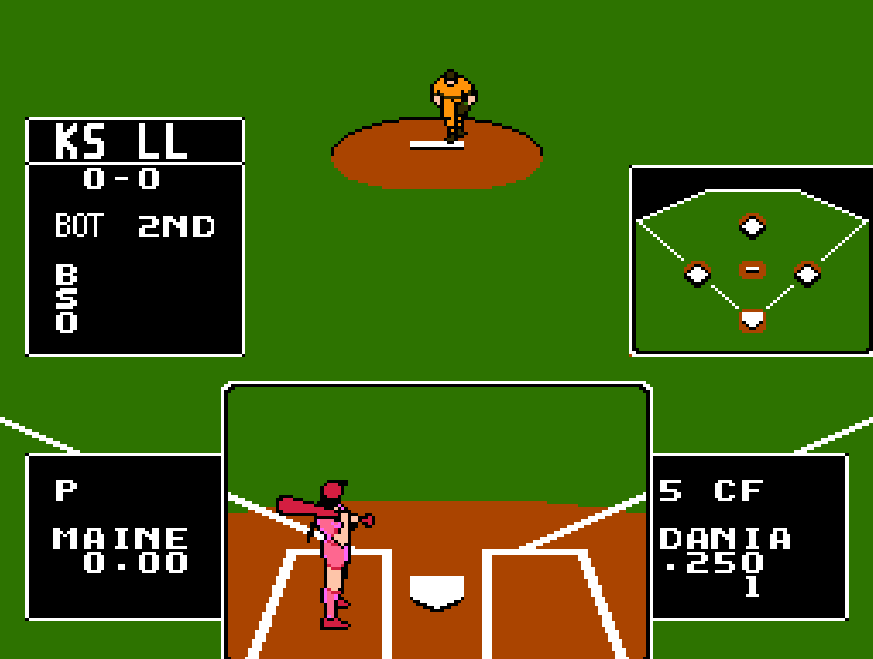
The core gameplay is very good with excellent responsiveness at bat and pitching. Fielding and baserunning are less so, but still good. Still, even seasoned players will occasionally make baserunning blunders and throw to the wrong base.
The game has some genuine flaws. The computer team often makes poor decisions on fielder’s choice plays. If you test them with a fast baserunner, you can “steal” bases out of a rundown play (although this is too tedious to be fun). New teams have abilities that are so low that trying to hit and field can be a chore until you raise their attributes. While in-game, there is no option to see the ratings of players, leaving you largely blind to how good they are.
Now Taking the Mound…
This era of baseball games introduces several in-game mechanics:
- While you can still curve pitches after you’ve thrown them, this effect is very small – location and pitch type are mostly determined before the pitcher releases the ball
- Part of pitch location is dictated by moving the pitcher left or right on the pitching rubber
- Runners can advance individually and also return to bases
- Batters can “bunt” although this appears like holding the bat stationary while in mid-swing
- The game only shows a portion of the field at one time, following the flight of the ball
- Fielders are auto-selected, which has advantages (you do not need to select one of the nine fielders) and drawbacks (sometimes it’s a surprise as to who is the active fielder – although this becomes easier to predict with practice)
- Making strong throws in the field use a mechanic where pressing the directional pad (to select the base) and the throw button simultaneously throws the hardest – the more time between the pad tap and button press, the weaker the throw
- Fielders can dive, jump and climb the wall, with each genuinely capable of robbing hits
- The pitcher can throw a “drop ball” which is indicated by a distinct whistling sound – if it drops (this may not happen if the pitcher is tired or has thrown too many drop balls), the ball will hit the dirt and the batter will always swing through the pitch
- Computer-controlled opponents are now standard in games
- Players can be hit by a pitch
- Errors can be charged, although this only happens when throwing the ball to an unoccupied base
A League of Their Own
Baseball Stars was the first console title to incorporate a franchise mode. You can make six teams in addition to the original eight fictional squads, which tended to be named around themes.
- SNK Crushers – A team named after the developers at SNK
- Lovely Ladies – All female players, female pitchers can actually pitch underhand with the classic windmill-style windup
- Ghastly Monsters – A squad named after classic movie monsters
- World Powers – A team with players named after world leaders and historical figures
- Japan Robins – Notable Japanese players
- Brave Warriors – A team named after US politicians
- Ninja Blacksox – A group of ninja and samurai from Japanese history
- American Dreams – American baseball hall of famers
Each roster has 5 pitchers, 8 starting players, and 5 bench hitters. Players on custom teams can be renamed, but are limited to six characters.
Wins in League or VS mode will earn money for upgrading or buying players. Buying an upgrade gives you 1 to 6 points to allocate to their attributes; the cost is based on their current quality. After firing a player to make room, you can hire Rookies, Veterans, and Star Players. Rookies have high max ratings but require the most upgrades. Veterans and Star Players are already filled out to their max ratings and priced accordingly.
Other options include:
- prioritizing hitting, running, or fielding for hitters
- overhand/sidearm delivery for pitchers
- handedness
- male or female players
-
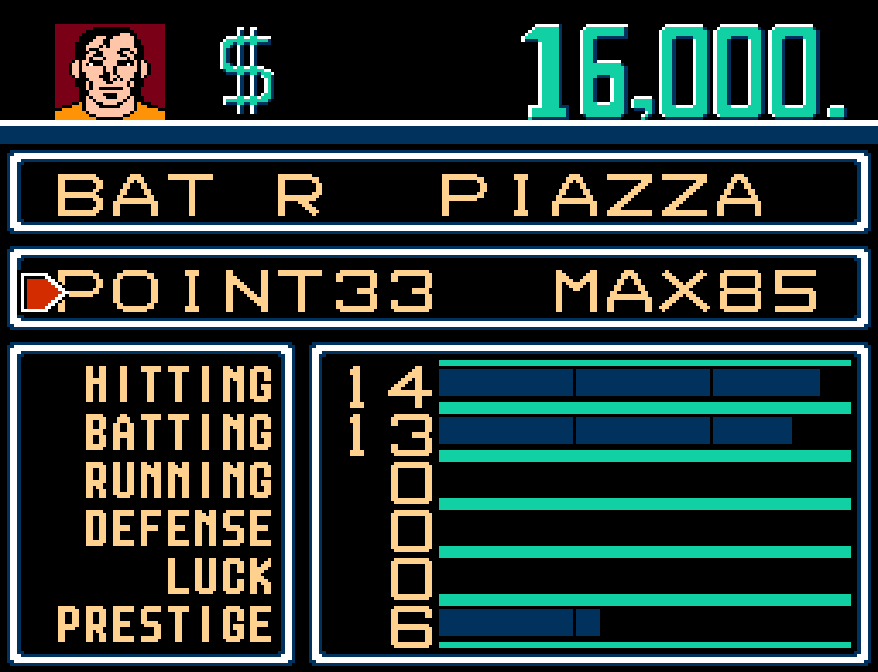
Your players can be upgraded (up to their max) or even replaced -
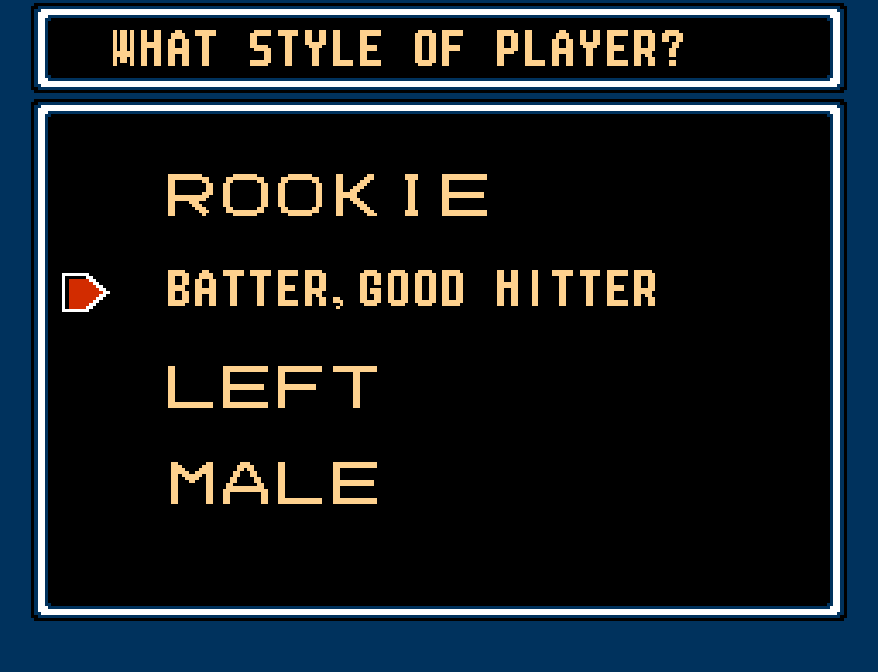
Make Player lets you chose what you need – even female players -
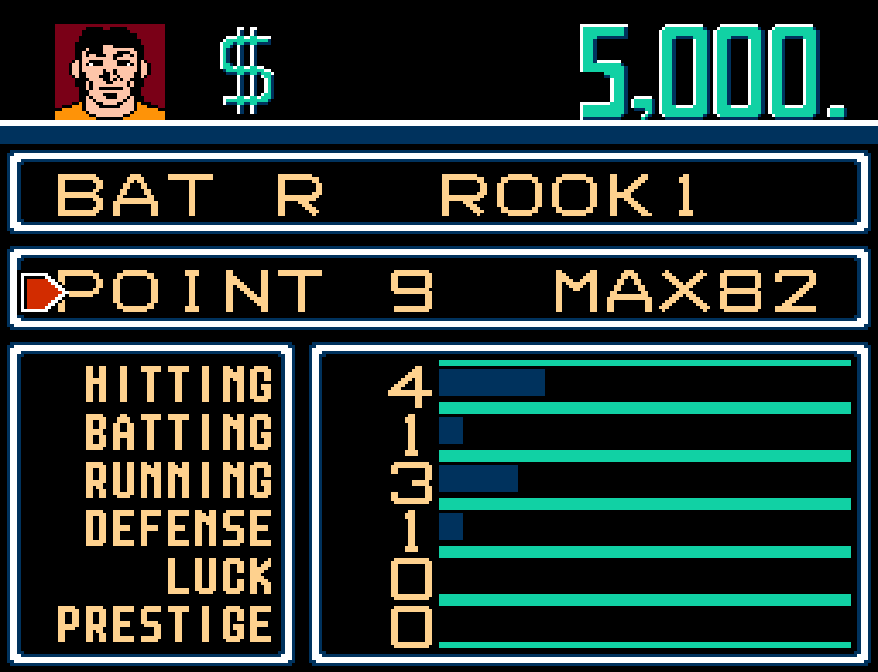
Rookies – Cheap with high potential -
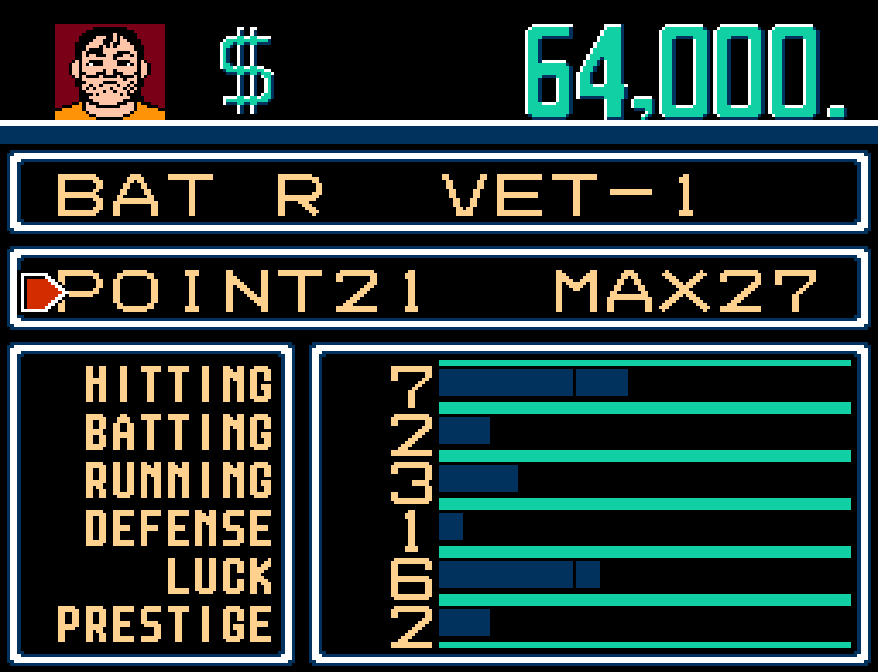
Veterans – Low cost, ready to play with no room to grow -
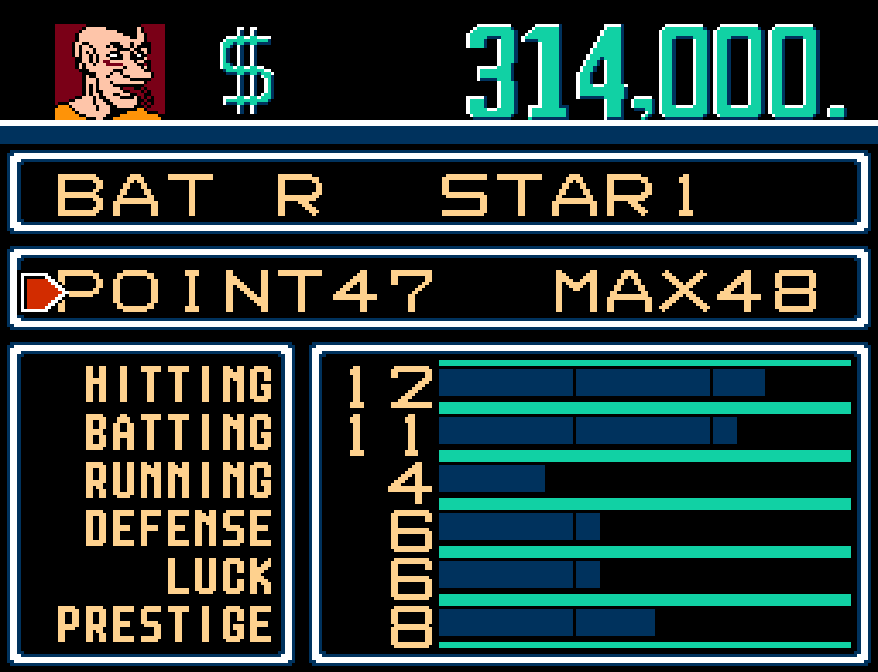
Star Players – Costly core pieces ready to slot in top of the order or rotation -

Sorry – Players need to be fired to make room for new ones
Season of the Pitch
The other mode that uses the battery saves is League Play. Two to six teams can compete in the league mixing custom and original teams. The teams play the schedule in a round-robin format that lasts from 3-25 games per matchup. The team at the top of the standings at the end is the champion with ties resulting in multiple champions.
Each game follows standard baseball rules with the exception that games will end in a no-decision after 18 innings and the infield fly rule does not exist.
During a season, the game tracks batting average, home runs, RBI, ERA, wins, losses, and saves for each player. While there is no screen to see each player on a team, the screen will display the average, home runs, and ERA of the batter and pitcher. The leaderboards show the top players for each category (apart from losses) during and after the season. While these pale in comparison to today’s games, they were nothing short of ground-breaking in their time.
-

League schedule -
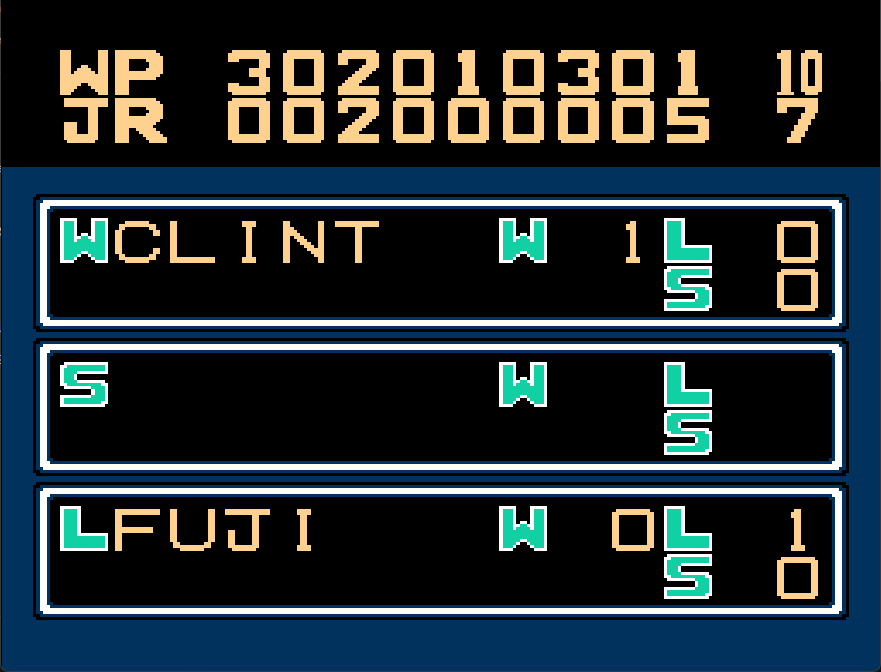
End game – linescore -
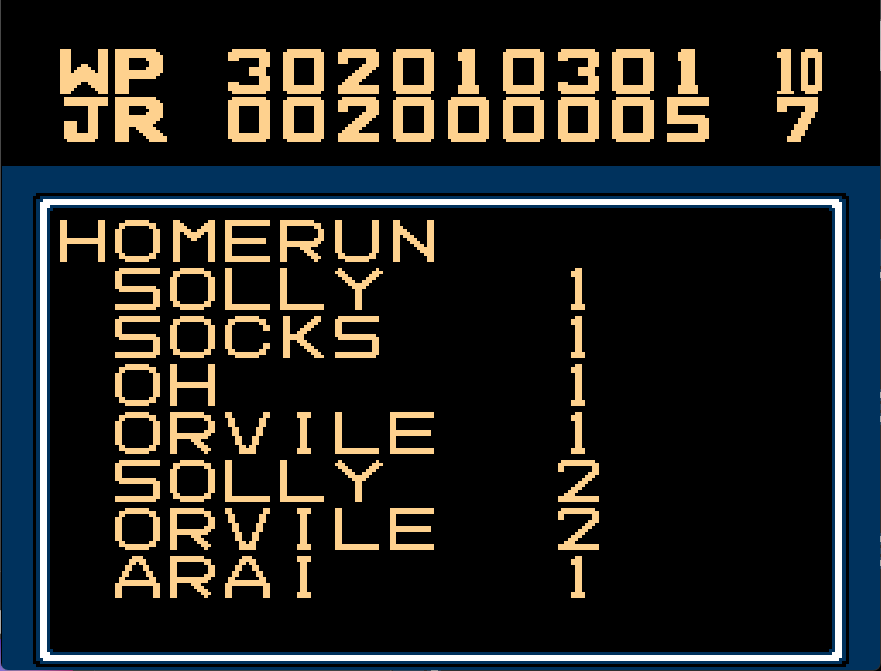
End game – home runs -
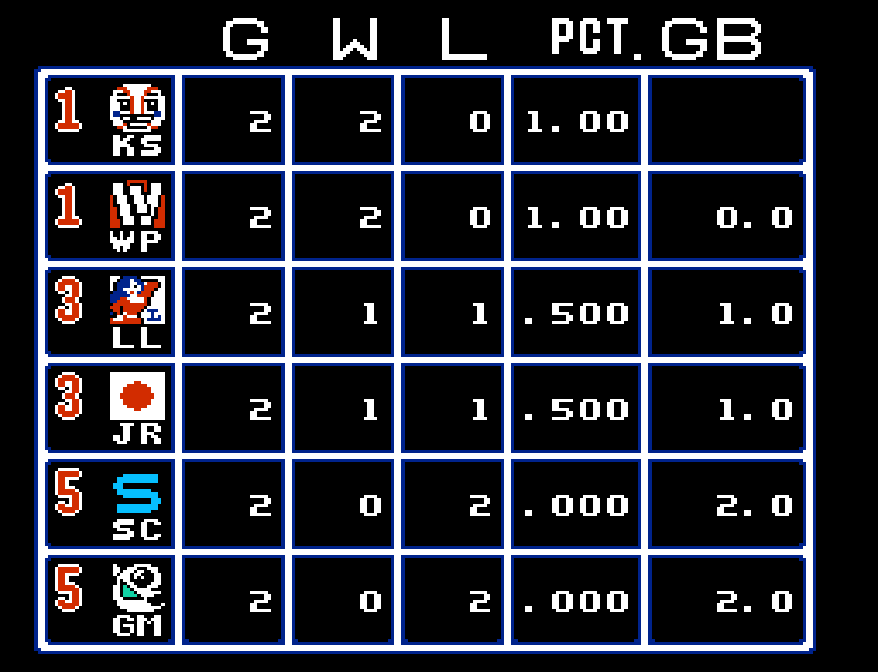
Season – Standings -
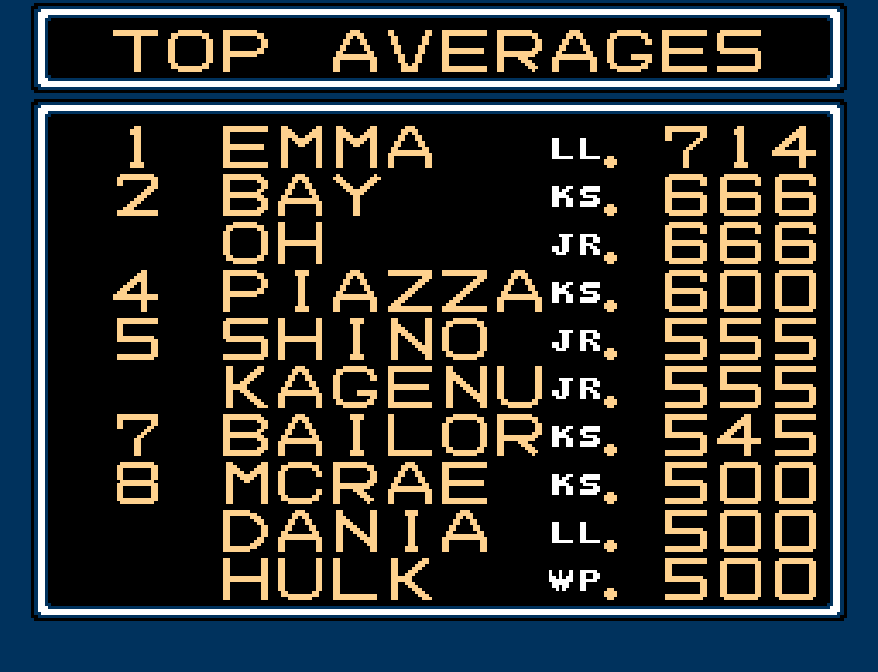
Season – Averages -
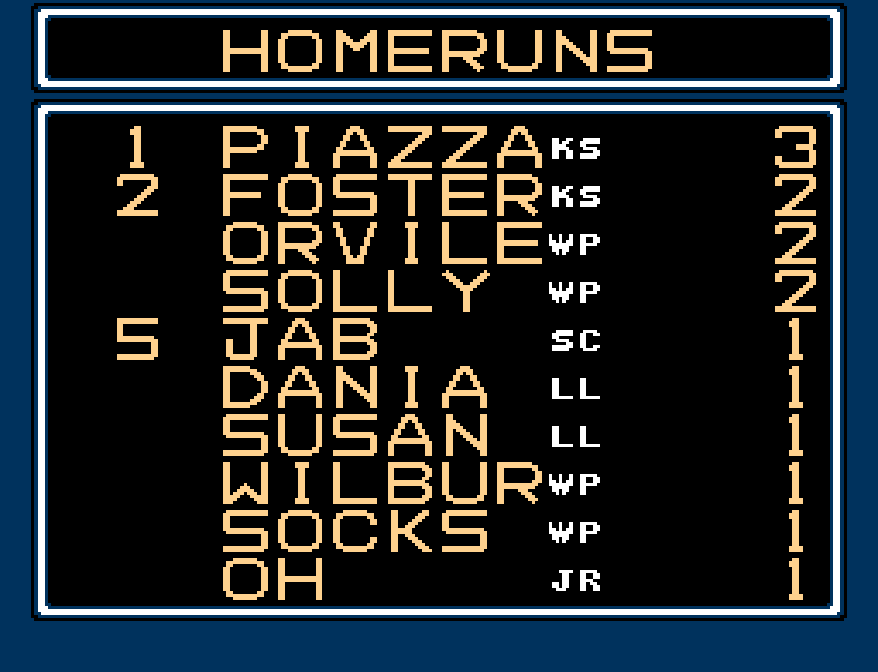
Season – Home Runs -
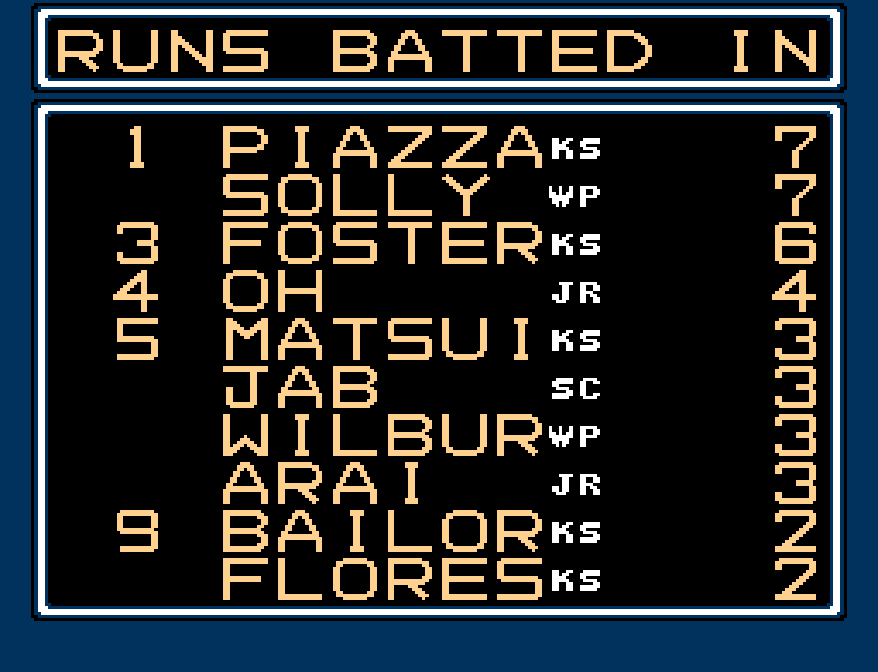
Season – Runs Batted In -
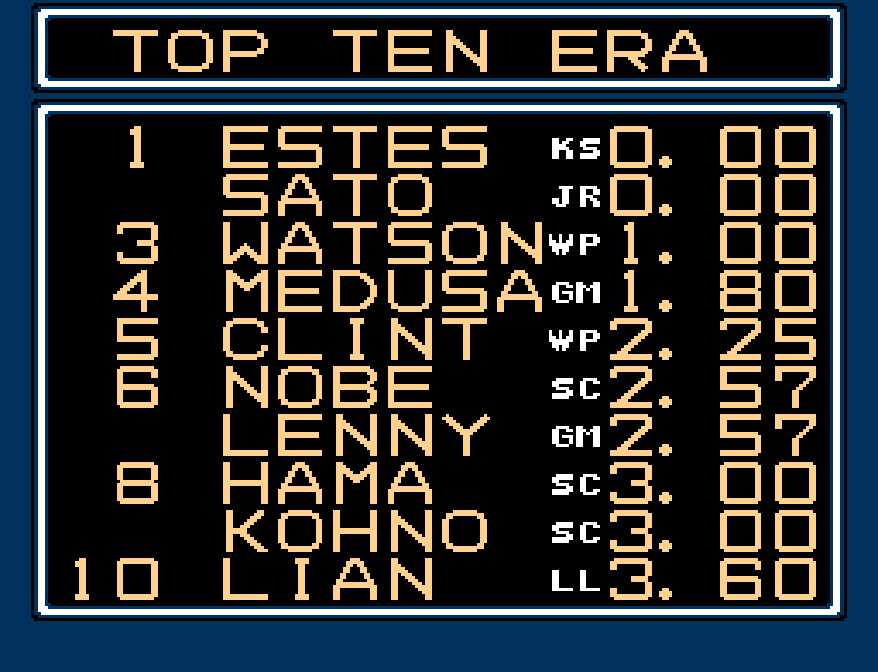
Season – ERA -
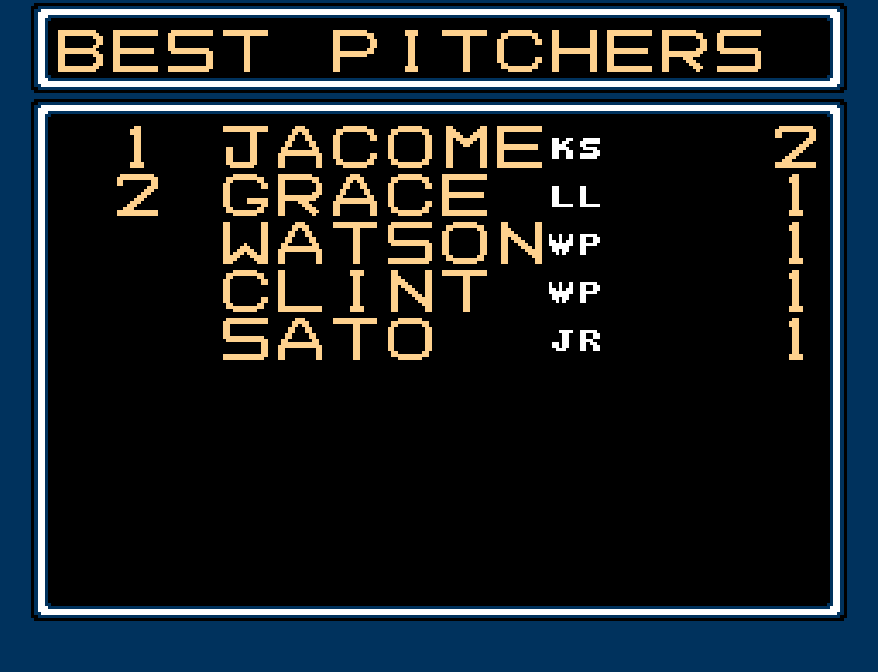
Season – Wins -
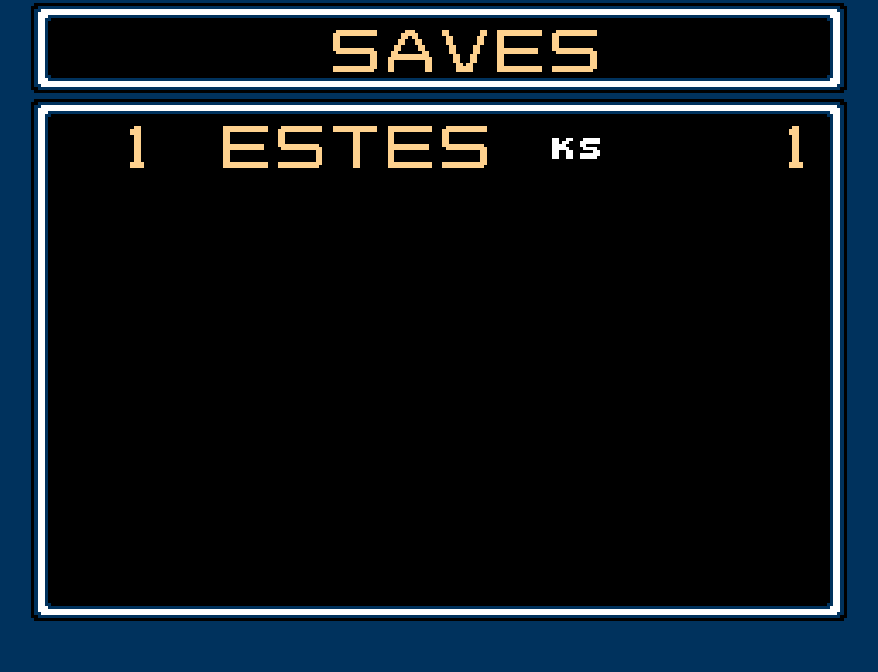
Season – Saves
The Legacy
Baseball Stars was lauded in its own time and is remembered today as an innovator and classic of the third-generation consoles. It spawned a small series, although it’s arguable that none of the sequels lived up to the original game.
- Baseball Stars Professional (Neo Geo, 1990)
- Enhanced graphics on a more powerful machine
- no customization or League Play
- Baseball Stars 2 (NES, 1991)
- Largely the same engine as Baseball Stars for the NES
- No ability to rename players or teams
- Four stadiums
- Shifts in the outfield
- Baseball Stars 2 (Neo Geo Arcade, 1992)
- Top-of-the-line animated graphics
- Arcade experience; need to enter coins for 3 minutes of gameplay
- Baseball Stars (Neo Geo Pocket, 1998)
- No real League Play
- Unlockable players
- Scaled-down graphics
- Simplified rating system
- Players have a status that affects their performance
- Baseball Stars Color (Neo Geo Pocket Color, 1999)
- Same as Baseball Stars for the Neo Geo Pocket with added color
The true legacy of Baseball Stars comes from introducing customization, season mode, and player upgrading to consoles. Today, these are features that are expected from all console sports games, regardless of the actual sport involved. And there is one Star back in 1989 that paved the way.
- Bryan Walkohttps://sabrbaseballgaming.com/author/bryan-walko/
- Bryan Walkohttps://sabrbaseballgaming.com/author/bryan-walko/
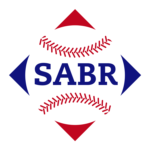
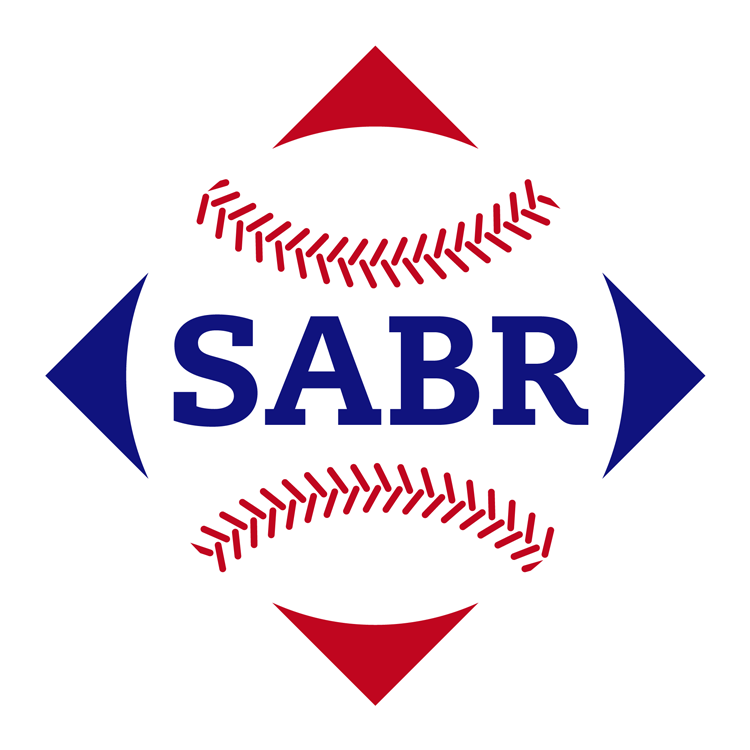
I wish someone would make a modern successor to the OG NES Baseball Stars. Such a great game. Almost everyone I played baseball with or against as a kid, owned this game.
“Drop – Controls how long the pitcher can throw a drop pitch; a staple of this generation of Japanese baseball games”
If you’re willing to clarify this, I’ll name my firstborn after you. E.g. how deep into a game a pitcher can throw it, or physically how far? I’m assuming the latter, but…all the pitches go as far as the catcher’s mitt, no? And a Drop pitch is something like a sinker or a splitter, I take it?
Been trying to figure out what Drop does for ages. Found a wiki that says the Up pitch is a sinker, and that Drop increases its vertical movement, but after doing some testing using a pitcher with 0 Drop and one with 15 Drop, and I don’t think the game has a Z-axis.
The game’s instruction booklet, FWIW, has the most frustrating explanation I can conceive: “Speed: Controls the average speed of your pitcher’s fast ball, Right curve, Left curve, Drop ball. Each point added will add one degree to the ball’s curve.” (That sentence can mean any number of things, argh)
Thanks in advance!